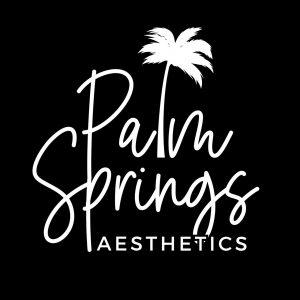Introduction
In the ever-evolving world of beauty and skincare, professionals in the field are finding it increasingly essential to keep up with the latest trends, treatments, and technological advancements. Continuing education in aesthetics plays a pivotal role in sustaining a competitive edge, ensuring that practitioners are not only updating their skills but are also providing the safest and most effective care to their clients. Embracing ongoing learning opportunities is the key to success and innovation in this dynamic industry.
Understanding the Significance of Continuing Education in Aesthetics Training
 Image courtesy: Unsplash
Image courtesy: Unsplash
Importance of Keeping Up with Skincare Advancements
In the dynamic field of aesthetics, staying abreast of the latest skincare advancements is essential. The skincare industry is continually evolving, with new technologies, treatments, and products being developed at a rapid pace. By engaging in continuing education, aesthetic professionals can keep up-to-date with these developments, ensuring they are using the most effective techniques and offering the latest treatments available. This is not just about adopting new methods, but also understanding the science behind them, which can significantly enhance treatment outcomes and improve client safety.
Enhancing Expertise Through Ongoing Education
Continuing education in aesthetics goes beyond just learning new procedures. It involves a deeper understanding of skin science, client consultation skills, and the nuances of aesthetic concerns across different skin types and ages. Courses and workshops provide comprehensive learning that touches on various aspects:
– Advanced anatomy and physiology
– Detailed chemical and product knowledge
– Latest procedural techniques such as micro-needling, laser therapies, and non-surgical lifts
This ongoing education is crucial for maintaining a high level of competency and ensuring that clients receive the best possible service tailored to their individual needs.
Benefits of Continuous Learning in Aesthetics
Improved Client Care and Satisfaction
When aesthetic professionals pursue ongoing education, they are better equipped to offer a higher standard of care. This improved care comes from a thorough understanding of the latest treatments and products tailored to meet the unique needs of each client. With the knowledge gained from up-to-date training, professionals can more accurately assess skin types, conditions, and the corresponding effective treatments. This not only enhances client satisfaction but also promotes repeat business as clients are likely to return to the same practitioner who can consistently provide them with the best care and newest offerings in skincare treatment.
Career Advancement Opportunities
Investing in continuous learning can significantly impact an aesthetician’s career trajectory. With each additional certification and training, professionals enhance their resume and broaden their expertise, which can open up new job opportunities in high-end spas, medical practices, or even positions such as training instructors or brand representatives. This not only helps in job retention but also positions the aesthetician for promotions or the possibility of opening their practice. The knowledge and skills acquired also enable them to offer a wider array of services, setting them apart from competitors.
Building Credibility and Trust with Clients
Clients tend to trust practitioners who demonstrate a commitment to their craft by staying informed about the latest trends and continuing their education. This trust is fundamental in a field where clients entrust their personal appearance to the hands of an aesthetician. Credibility also comes from official certifications and qualifications obtained through ongoing education, showing clients that the professional adheres to the highest standards set by the industry. Regular participation in educational courses and seminars also helps build a network and gain endorsements from recognized industry experts, further enhancing an aesthetician’s professional credibility.
How to Choose the Right Continuing Education Programs in Aesthetics
Choosing the right continuing education program in aesthetics is essential for keeping your skills sharp and staying ahead in this rapidly evolving field. With numerous courses and institutions available, making an informed decision can feel overwhelming. Here are some key considerations to help you select a program that aligns with your professional aspirations and enhances your expertise.
Researching Accredited Institutions and Courses
Start by researching programs offered by accredited institutions. Accreditation ensures that the education provided meets specific quality standards set by a recognized accrediting body. This not only guarantees you receive a high standard of education but also enhances the credibility of your qualifications in the eyes of employers and clients. Check the institution’s website for accreditation details and look for reviews or testimonials from past students to gauge the quality of the courses offered. Additionally, consider the credentials of the faculty to ensure you are learning from experienced professionals in the aesthetics field.
Considering Personal Interests and Career Goals
Your personal interests and career goals should play a significant role in selecting a continuing education program. Are you more passionate about non-surgical treatments, or do you find the cutting-edge advances in anti-aging techniques fascinating? Matching the program with your interests will keep you engaged and motivated. Moreover, consider your long-term career goals. Whether you aim to specialize in a particular technique or aspire to open your own spa, choose courses that align with these objectives. This tailored approach ensures that you gain the skills and knowledge necessary to propel your career forward.
Real-world Applications of Ongoing Education in Aesthetics
Continued education in aesthetics not only expands your knowledge but also has tangible benefits in real-world settings. From improving client outcomes to implementing innovative techniques, ongoing learning can significantly impact your practice and reputation in the aesthetic community.
Case Studies: Impact of Continued Learning on Client Outcomes
Several case studies illustrate the positive impact of continued education on aesthetics practices. For instance, aestheticians who pursue advanced courses in skin chemistry and the latest anti-aging treatments often report higher client satisfaction rates. These professionals are better equipped to customize treatments based on cutting-edge research, leading to better skin health outcomes for their clients. Furthermore, staying updated with the latest safety protocols and technology can significantly reduce risks associated with treatments, thereby boosting trust and loyalty among clients.
Incorporating New Techniques into Practice
Adopting new techniques and technologies is crucial in keeping your practice competitive and relevant. Continued education offers the opportunity to learn and master the latest innovations in skincare, such as advanced laser therapies or breakthrough anti-aging ingredients. By integrating these new techniques into your services, you can offer a wider range of treatments, cater to a broader client base, and differentiate your practice from others. Not only does this enhance your professional reputation, but it also drives business growth by attracting new clients and retaining existing ones.
In conclusion, investing in ongoing education is essential for any aesthetics professional aiming to excel in this dynamic field. By carefully selecting the right programs and applying learned skills in real-world scenarios, you can significantly enhance both your professional development and your practice’s success.
Overcoming Challenges in Pursuing Continuing Education in Aesthetics
 Image courtesy: Unsplash
Image courtesy: Unsplash
Continuing education in aesthetics is imperative for professionals who strive to stay at the forefront of their field. However, pursuing additional training and education comes with its own set of challenges. Among these, finding the time and managing financial resources effectively are the most prominent. Addressing these can not only enhance one’s skills but also significantly boost career prospects in the competitive field of aesthetics.
Time Management Strategies for Balancing Work and Learning
Balancing a demanding work schedule with continuing education can seem daunting, but with the right strategies, it’s entirely feasible. One effective method is to create a strict but flexible schedule that allocates specific time slots for learning and professional duties. Prioritizing tasks according to urgency and importance can also reduce stress and increase productivity. Additionally, leveraging online courses can provide the flexibility to learn at one’s own pace and at times that are most convenient, thereby integrating seamlessly with personal and professional responsibilities.
Utilizing downtime effectively, like studying during commutes or between client appointments, can also add valuable learning time. Finally, communicating openly with employers about educational pursuits may lead to adjusted schedules or support in the form of extended deadlines or reduced workloads during critical learning periods.
Financial Considerations and Resources for Education Funding
The financial investment required for continuing education in aesthetics can be significant, but several strategies and resources can help manage these expenses. Looking into scholarships offered by educational institutions or professional associations can substantially offset costs. Many organizations value the upskilling of their employees and may offer partial or full reimbursement for courses that enhance professional development.
Moreover, enrolling in community college courses or online programs can be a more affordable option than attending prestigious but costly institutions. Exploring flexible payment plans offered by educational bodies can also ease the financial burden, allowing for the distribution of expenses over time.
In essence, while the challenges of balancing time and financial resources exist, various strategies and aids can facilitate the pursuit of continuing education in aesthetics, ensuring professionals remain competitive and proficient in their practice.
Conclusion: Embracing Lifelong Learning in Aesthetics for Professional Growth
The ever-evolving landscape of skincare and aesthetics makes continuing education not just beneficial but essential for professionals wishing to maintain efficacy and relevance in their careers. In the quest for excellence and client satisfaction, the commitment to ongoing learning stands as the bedrock for innovation and personal development. By embracing lifelong learning, aesthetic professionals can ensure they remain at the forefront of industry advancements, providing them with the tools to enhance their skills, increase their marketability, and, consequently, achieve higher client loyalty and business success.
Adapting to the latest trends, technologies, and techniques gathered from continuous education courses means practitioners are well-prepared to meet the changing needs and expectations of their clients. This not only enriches the service offering but also fortifies the trust and confidence clients place in their aesthetic professionals. Ultimately, a devotion to continual learning within aesthetics exemplifies a dedication not only to one’s craft but also to the overall enhancement of the client’s well-being and satisfaction.





